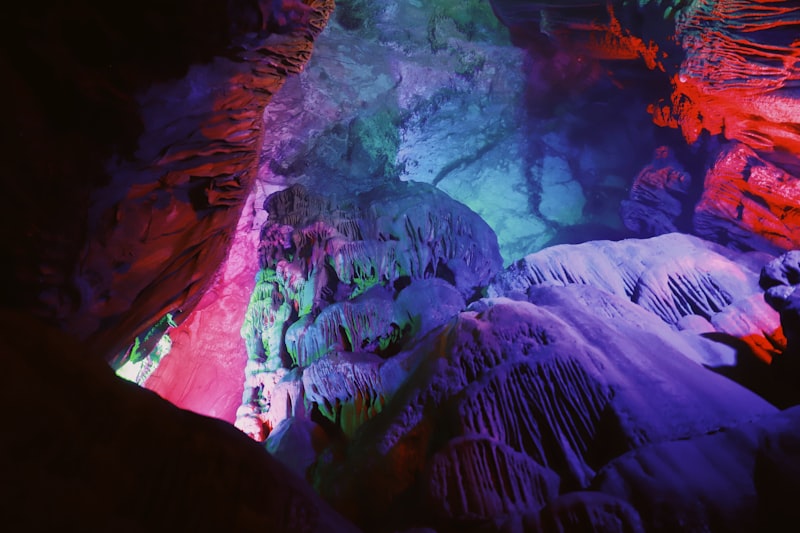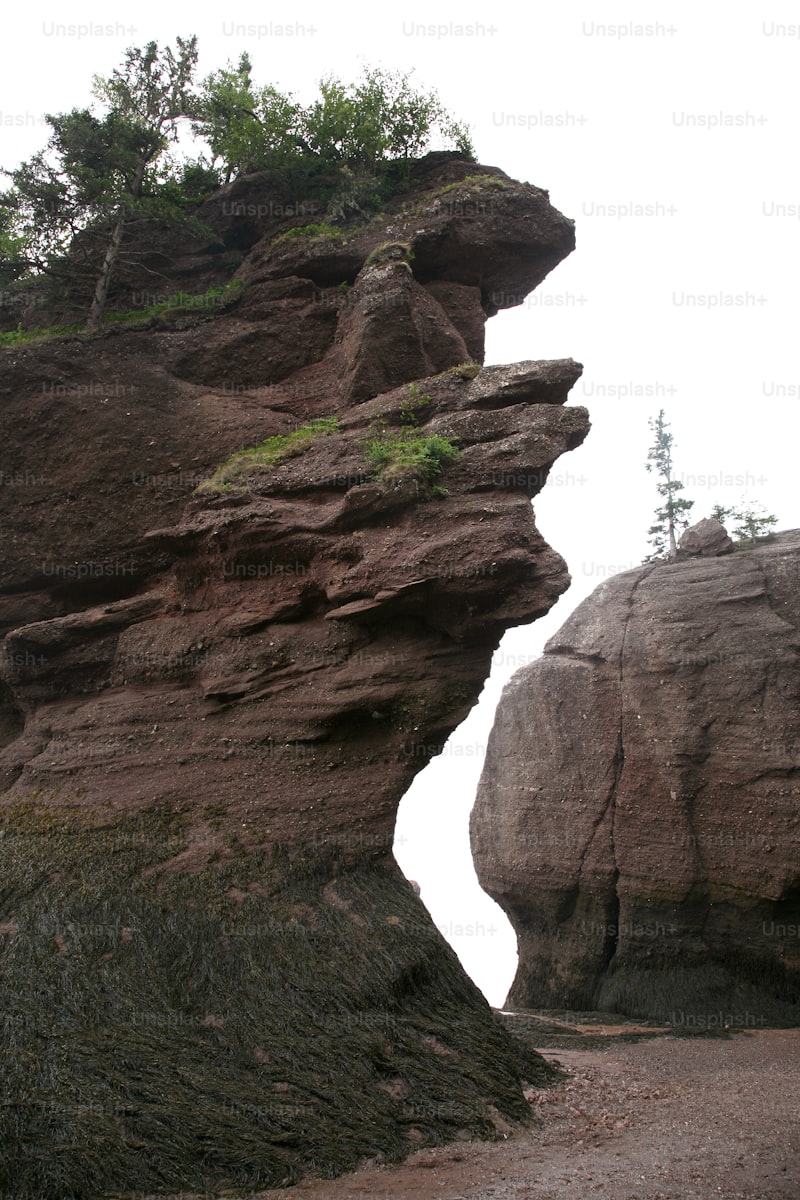Have you ever wondered about the hidden wonders beneath the Earth’s surface? Natural rock formations in caves are not just geological marvels but stunning works of art crafted by nature over millennia. Imagine stepping into a world where stalactites hang like chandeliers from the cave ceiling, and stalagmites rise majestically from the cave floor, resembling ancient sculptures frozen in time.
These formations are primarily composed of limestone, shaped by the slow, patient work of water dissolving and redepositing minerals over centuries. Each drip of mineral-rich water leaves behind a tiny ring of calcite, gradually building these breathtaking structures. The result? Cave walls adorned with delicate curtains of flowstone, resembling frozen waterfalls, and intricate helictites that defy gravity as they twist and turn in seemingly impossible formations.

One of the most mesmerizing sights in caves is the formation of columns, where stalactites above and stalagmites below meet to form towering pillars that seem to support the cave itself. It’s as if nature has sculpted its own cathedral underground, where light plays tricks on the eye, highlighting the natural hues of minerals and creating a magical atmosphere that captivates explorers and scientists alike.
Exploring these caves is not just a journey through geological time but a visual feast that sparks wonder and imagination. The interplay of light and shadow, the eerie silence broken only by the occasional drip of water, all add to the mystique of these underground galleries. It’s no wonder that cave explorers and tourists alike are drawn to these natural wonders, seeking to uncover the secrets hidden within the depths of the Earth.
Next time you find yourself near a cave entrance, take a moment to consider the beauty that lies beneath your feet. The natural rock formations inside are not just remnants of geological processes but testaments to the awe-inspiring creativity of nature itself.
Subterranean Splendor: Exploring the Hidden Wonders of Cave Rock Formations
Have you ever wondered about the mystical beauty concealed beneath the Earth’s surface? Cave rock formations, with their breathtaking stalactites and stalagmites, offer a glimpse into a world shaped by millennia of natural artistry. These subterranean wonders captivate explorers and geologists alike, revealing stories written in stone.
Cave rock formations are not mere geological features; they are narratives of time and transformation. Each stalactite hanging delicately from cave ceilings and stalagmite rising steadfastly from cave floors tells a tale of mineral-rich water droplets slowly sculpting calcium carbonate masterpieces. It’s a slow dance of dissolution and deposition, where every drip adds another layer to these underground cathedrals.
The allure of cave formations lies not only in their beauty but also in their scientific significance. They provide invaluable insights into Earth’s history, preserving clues about ancient climates and ecosystems. Exploring these formations is like unlocking a time capsule buried deep within the Earth, offering researchers a window into the past.

Imagine standing in a cavern adorned with intricate curtains of stone, illuminated by the soft glow of mineral-rich waters. The air is cool and damp, carrying whispers of tales from centuries past. Each formation, whether resembling frozen waterfalls or towering columns, invites contemplation of nature’s patient craftsmanship.
Visiting these hidden marvels is a journey into the heart of geological wonder. It’s a reminder of the Earth’s capacity for artistic creation, where water and time collaborate to sculpt masterpieces hidden from the sun. For adventurers and scientists alike, cave rock formations promise an unforgettable exploration of subterranean splendor.
This article aims to evoke curiosity and appreciation for cave rock formations while maintaining a conversational tone and engaging the reader with vivid descriptions and storytelling elements.
Nature’s Sculptures: Unveiling the Mesmerizing Geology Inside Earth’s Caves
Imagine stepping into a world where time seems to stand still. As you descend into these natural galleries, stalactites and stalagmites greet you like ancient sentinels guarding the secrets of the Earth. These formations, formed drip by drip from mineral-rich water, hang from the ceilings or rise from the floors, casting eerie shadows that dance with your every move.
One of the most awe-inspiring features of caves is their diversity. Each cave tells a unique story through its formations. Some caves boast delicate helictites—twisted formations that defy gravity—as if nature herself were an artist creating intricate sculptures with a masterful hand. Others are adorned with flowstones, where cascades of mineral deposits create smooth, undulating walls that shimmer in the dim light.
The beauty of caves isn’t just skin deep. Beyond their stunning appearances, these subterranean labyrinths hold clues to our planet’s geological past. By studying the layers of rock and mineral deposits within caves, scientists can unravel the history of climate change, seismic activity, and even ancient civilizations that once sought shelter in these natural sanctuaries.
But caves aren’t just for scientists and adventurers. They evoke a sense of wonder and curiosity in all who visit. How did these caves form? What forces of nature conspired to create such surreal beauty? These questions linger in the air, drawing you deeper into the mystery that lies beneath our feet.
In the darkness of caves, speleothems—such as columns, draperies, and cave pearls—add to the allure, each formation a testament to the slow and steady work of nature’s hands. It’s as if the Earth itself is a sculptor, patiently carving out these underground cathedrals where time moves at its own pace.
Exploring caves isn’t just an adventure; it’s a journey through time and space. It’s a chance to witness firsthand the artistry of nature, where every drip of water, every mineral deposit, has contributed to the grand masterpiece that lies hidden beneath the surface.
Beyond Darkness: Illuminating the Spectacular Rock Formations Deep Within Caves
Imagine stepping into a world where time seems to stand still, where every corner reveals a new masterpiece crafted over millennia. Caves, like silent storytellers, showcase nature’s artistic prowess through formations such as stalactites and stalagmites. These formations, formed drop by drop from mineral-rich water, resemble frozen fountains or ancient sculptures, each with a unique shape and texture.
One of the most enchanting sights within caves is the glow of bioluminescent organisms. These tiny creatures create a celestial-like ambiance, as if stars have descended into the Earth itself. Their gentle glow illuminates the darkness, adding a mystical aura to the already magical surroundings.
Beyond their aesthetic appeal, these rock formations also hold clues to Earth’s geological history. Each layer of sediment tells a story of climatic changes, ancient seas, and the slow dance of tectonic plates. Exploring caves is like flipping through the pages of a vast, ancient book, deciphering the mysteries of our planet’s past.
Moreover, caves are not merely static structures; they are dynamic environments that continue to evolve. Dripping water still shapes these formations today, reminding us of the ongoing processes that shape our world. This constant evolution makes each visit to a cave a unique experience, with no two formations ever quite the same.
Exploring the spectacular rock formations deep within caves is a journey into the heart of Earth’s natural wonders. It’s a chance to witness firsthand the artistry of nature, the resilience of life, and the enduring beauty hidden beneath the surface. Ready to embark on an adventure that will leave you in awe?
Timeless Elegance: Capturing the Ancient Artistry of Cave Rock Formations
Imagine stepping into a world where nature herself is the master artist, shaping stone into ethereal beauty. The smooth curves and intricate patterns of cave walls echo a timeless elegance that transcends centuries. It’s as if these formations were meticulously crafted by a divine sculptor, leaving visitors in awe of nature’s creative prowess.
Walking through these caverns feels like wandering through an ancient gallery, where every turn unveils a new masterpiece. The play of light and shadow on limestone walls creates a mesmerizing dance, enchanting explorers and photographers alike. It’s a reminder that beauty, in its purest form, doesn’t fade with time—it only deepens.
But beyond their aesthetic allure, cave rock formations harbor secrets of our planet’s past. They are geological archives, preserving clues about climate change, ancient ecosystems, and even human history. Studying these formations is like reading chapters of a book written in stone, offering insights into the Earth’s evolution and the forces that shaped it.
Visiting these natural wonders is not just a journey through space, but a journey through time itself. It’s a chance to marvel at the interconnectedness of all life and appreciate the resilience of the natural world. These caves are more than geological wonders—they are portals to a forgotten era, inviting us to ponder our place in the grand tapestry of existence.
So next time you find yourself standing before the mouth of a cave, take a moment to absorb its timeless elegance. Let its ancient artistry speak to you, reminding you of the beauty that endures beyond the passage of time.
Geological Marvels: The Enchanting Diversity of Cave Rock Shapes and Textures
Imagine stepping into a cave where stalactites hang like chandeliers, their pointed tips reaching towards the ground as if frozen mid-drip. These formations, formed by mineral-rich water slowly depositing calcite over centuries, create an otherworldly landscape. They sparkle under the dim glow of a flashlight, revealing intricate patterns that seem almost too perfect for nature’s handiwork.
Venturing deeper, one might encounter stalagmites rising from the cave floor like ancient sentinels. These mineral pillars grow upward, mirroring their stalactite counterparts above, yet with a stalwart presence that speaks of endurance and timelessness. Their rough textures bear witness to the slow accumulation of mineral layers, each one a record of the cave’s silent growth.
In some caves, the walls themselves seem alive with texture, adorned with flowstone formations that resemble frozen waterfalls cascading down from unseen heights. These smooth, undulating surfaces are formed by mineral-laden water trickling over the rock, leaving behind layers that resemble draperies frozen in time.

The diversity of cave rock shapes and textures is a testament to the endless creativity of geological processes. From delicate helictites that defy gravity to massive cave pearls formed by concentric layers of calcite around a central nucleus, each formation tells a silent tale of the forces that shaped it.
Exploring these geological wonders is akin to entering a natural art gallery where every turn reveals a new masterpiece. It’s a journey through time, where the Earth’s ancient past is preserved in stone, waiting to be discovered and marvelled at by those who venture into the depths of these enchanting underground realms.
Journey to the Center: Discovering the Geological Secrets of Cave Rock Formations
Cave formations such as stalactites, hanging like icicles from the cave ceiling, and stalagmites, rising majestically from the cave floor, are formed through a slow dance of water and minerals. Water, rich with dissolved calcium carbonate, seeps through cracks in the rock above. As it drips into the cave, a tiny bit of calcium carbonate is left behind with each drop. Over centuries, these deposits accumulate to form delicate structures that defy gravity.
Each cave tells a unique story through its formations. In some caves, you may encounter draperies—thin, translucent sheets of rock that cascade down walls like frozen waterfalls. Others may feature flowstones, where water creates smooth, undulating layers over rocks, resembling frozen waves frozen in time.
Exploring these geological wonders isn’t just a journey through space but also through time. The formations are a testament to the slow and steady pace of geological processes, where what appears static is in constant flux. It’s a reminder that the Earth’s surface is a dynamic canvas, shaped by forces both gentle and powerful.
What makes these formations even more awe-inspiring is their fragility. A single touch can disrupt the delicate balance that took millennia to create. This delicate balance underscores the importance of conservation efforts to protect these natural wonders for future generations.
Frequently Asked Questions
How can visitors explore and appreciate cave formations safely and responsibly?
Learn how to safely explore and appreciate cave formations with these guidelines. Discover how to protect fragile environments, avoid disturbing wildlife, and ensure your safety through proper gear and preparation.
What causes the vibrant colors seen in cave minerals and formations?
Discover what creates the vivid colors in cave minerals and formations, exploring how minerals like calcite and gypsum interact with trace elements and organic compounds. These interactions produce stunning hues through processes such as oxidation, crystallization, and microbial activity.
Where are the world’s most famous cave systems known for their rock formations?
Discover where the world’s most renowned cave systems are celebrated for their spectacular rock formations.
What are some stunning natural rock formations commonly found in caves?
Explore some of the world’s most breathtaking natural rock formations typically discovered within caves. From stalactites and stalagmites that grow from cave ceilings and floors to delicate helictites and sparkling cave pearls, these formations form over centuries due to mineral-rich water slowly dripping and depositing minerals. Each cave offers unique geological wonders shaped by time and natural processes.
How do stalactites and stalagmites form in cave environments?
Discover how stalactites and stalagmites form in caves, shaped over time by mineral-rich water dripping from cave ceilings to form icicle-like stalactites above and cone-shaped stalagmites below.


